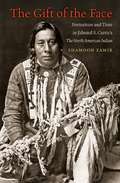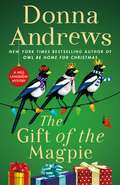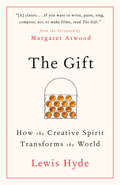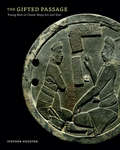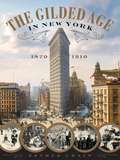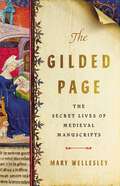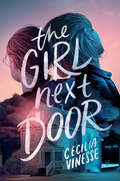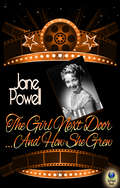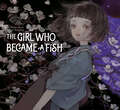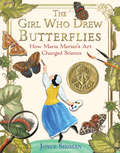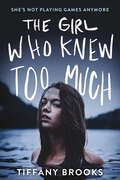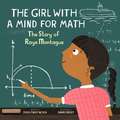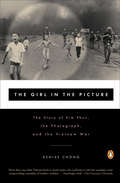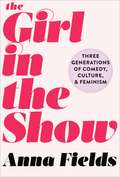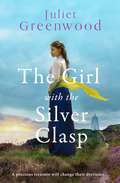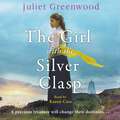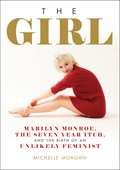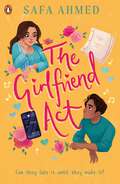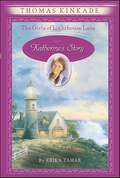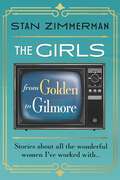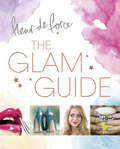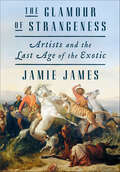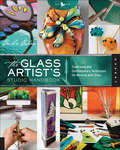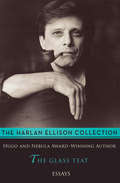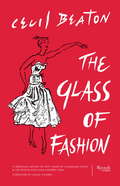- Table View
- List View
The Gift of the Face
by Shamoon ZamirEdward S. Curtis's The North American Indian is the most ambitious photographic and ethnographic record of Native American cultures ever produced. Published between 1907 and 1930 as a series of twenty volumes and portfolios, the work contains more than two thousand photographs intended to document the traditional culture of every Native American tribe west of the Mississippi. Many critics have claimed that Curtis's images present Native peoples as a "vanishing race," hiding both their engagement with modernity and the history of colonial violence. But in this major reappraisal of Curtis's work, Shamoon Zamir argues instead that Curtis's photography engages meaningfully with the crisis of culture and selfhood brought on by the dramatic transformations of Native societies. This crisis is captured profoundly, and with remarkable empathy, in Curtis's images of the human face. Zamir also contends that we can fully understand this achievement only if we think of Curtis's Native subjects as coauthors of his project.This radical reassessment is presented as a series of close readings that explore the relationship of aesthetics and ethics in photography. Zamir's richly illustrated study resituates Curtis's work in Native American studies and in the histories of photography and visual anthropology.
The Gift of the Magpie: A Meg Langslow Mystery (Meg Langslow Mysteries #28)
by Donna AndrewsNew York Times bestselling author Donna Andrews returns with another Meg Langslow mystery written "firmly in the grand tradition of Agatha Christie's Christmas books" (Toronto Globe and Mail).The 28th book and the seventh Christmas mystery in the Meg Langslow series, The Gift of the Magpie is yet another wonderfully merry and funny book from New York Times bestselling author Donna Andrews. Meg’s running Caerphilly’s Helping Hands for the Holidays project, in which neighbors help each other with things they can’t do and can’t afford to have done. Her hopes for a relatively peaceful (if busy) Christmas vanish when someone murders Harvey the Hoarder, whose house the Helping Hands were decluttering. Was there any truth to the rumor that he had something valuable hidden beneath all his junk? Was one of his friends, neighbors, or relatives greedy enough to murder him for the rumored treasure? And what about the magpie that has been bringing her family bits of tinsel and costume jewelry—does the bird’s latest gift hold a clue to solving the crime? Full of intrigue, this Christmas mystery will take readers home to Caerphilly, where the suspense falls as thick as the snow.
The Gift: How the Creative Spirit Transforms the World (Canons Ser.)
by W.Lewis HydeDiscusses the argument that a work of art is essentially a gift and not a commodity.
The Gifted Passage: Young Men in Classic Maya Art and Text
by Stephen HoustonIn this thought-provoking book, preeminent scholar Stephen Houston turns his attention to the crucial role of young males in Classic Maya society, drawing on evidence from art, writing, and material culture. The Gifted Passage establishes that adolescent men in Maya art were the subjects and makers of hieroglyphics, painted ceramics, and murals, in works that helped to shape and reflect masculinity in Maya civilization. The political volatility of the Classic Maya period gave male adolescents valuable status as potential heirs, and many of the most precious surviving ceramics likely celebrated their coming-of-age rituals. The ardent hope was that youths would grow into effective kings and noblemen, capable of leadership in battle and service in royal courts. Aiming to shift mainstream conceptions of the Maya, Houston argues that adolescent men were not simply present in images and texts, but central to both.
The Gilded Age in New York, 1870-1910
by Esther CrainThe drama, expansion, mansions and wealth of New York City's transformative Gilded Age era, from 1870 to 1910, captured in a magnificently illustrated hardcover.In forty short years, New York City suddenly became a city of skyscrapers, subways, streetlights, and Central Park, as well as sprawling bridges that connected the once-distant boroughs. In Manhattan, more than a million poor immigrants crammed into tenements, while the half of the millionaires in the entire country lined Fifth Avenue with their opulent mansions. The Gilded Age in New York captures what is was like to live in Gotham then, to be a daily witness to the city's rapid evolution. Newspapers, autobiographies, and personal diaries offer fascinating glimpses into daily life among the rich, the poor, and the surprisingly large middle class. The use of photography and illustrated periodicals provides astonishing images that document the bigness of New York: the construction of the Statue of Liberty; the opening of the Brooklyn Bridge; the shimmering lights of Luna Park in Coney Island; the mansions of Millionaire's Row. Sidebars detail smaller, fleeting moments: Alice Vanderbilt posing proudly in her "Electric Light" ball gown at a society-changing masquerade ball; immigrants stepping off the boat at Ellis Island; a young Theodore Roosevelt witnessing Abraham Lincoln's funeral.The Gilded Age in New York is a rare illustrated look at this amazing time in both the city and the country as a whole. Author Esther Crain, the go-to authority on the era, weaves first-hand accounts and fascinating details into a vivid tapestry of American society at the turn of the century. Praise for New-York Historical Society New York City in 3D In The Gilded Age, also by Esther Crain: "Vividly captures the transformation from cityscape of horse carriages and gas lamps 'bursting with beauty, power and possibilities' as it staggered into a skyscraping Imperial City." -Sam Roberts, The New York Times"Get a glimpse of Edith Wharton's world." - Entertainment Weekly Must List"What better way to revisit this rich period . . ?" - Library Journal
The Gilded Page: The Secret Lives of Medieval Manuscripts
by Mary WellesleyA breathtaking journey into the hidden history of medieval manuscripts, from the Lindisfarne Gospels to the ornate Psalter of Henry VIII&“A delight—immersive, conversational, and intensely visual, full of gorgeous illustrations and shimmering description.&” –Helen Castor, author of She-WolvesMedieval manuscripts can tell us much about power and art, knowledge and beauty. Many have survived because of an author&’s status—part of the reason we have so much of Chaucer&’s writing, for example, is because he was a London-based government official first and a poet second. Other works by the less influential have narrowly avoided ruin, like the book of illiterate Margery Kempe, found in a country house closet, the cover nibbled on by mice. Scholar Mary Wellesley recounts the amazing origins of these remarkable manuscripts, surfacing the important roles played by women and ordinary people—the grinders, binders, and scribes—in their creation and survival.The Gilded Page is the story of the written word in the manuscript age. Rich and surprising, it shows how the most exquisite objects ever made by human hands came from unexpected places.&“Mary Wellesley is a born storyteller and The Gilded Page is as good as historical writing gets. This is a sensational debut by a wonderfully gifted historian.&” —Dan Jones, bestselling author of The Plantagenets and The Templars
The Girl Next Door
by Cecilia VinessePart To All the Boys I've Loved Before, part Everything Leads to You, this queer rom-com puts a smart spin on all the YA tropes we can't get enough of.Film club nerd Cleo Ferrara’s senior year was like a storyboard waiting to be filmed. She knew the scenes, the players, and the eventual happy ending. Attend film school with her boyfriend, Daniel Sheridan. Become a film-making power couple. Take Hollywood by storm. Cut. Print. Fade to black.?But in a plot twist Cleo never saw coming, Daniel dumps her for Kiki Pearson, the head cheerleader. This would be the point in the movie where the Sad Girl Music plays while the protagonist looks longingly out her window, but when Cleo looks out hers, she sees Marianne Lacerda, her former best friend…and a new storyboard unfolds.Marianne is also nursing a heartache. When Daniel was dumping Cleo for Kiki, Kiki was dumping Marianne for Daniel. So instead of watching their exes parade around school, Cleo and Marianne start fake dating each other to ignite a little chaos in this bizarre love square. But any movie buff knows that when you introduce fake dating in Act I, it’s going to get real by Act III. With friendship, the future, and love on the line, can Cleo script a happy ending for herself—or will she get her heart broken again?
The Girl Next Door . . . And How She Grew
by Jane PowellThe star of the classic musical films Royal Wedding and Seven Brides for Seven Brothers recounts her life in Hollywood and beyond—includes photos! Jane Powell is immortalized on film as the sweet-faced gal who sang and danced with Fred Astaire and shared on-screen romances with Ricardo Montalban, Farley Granger, and other legends of Hollywood&’s Golden Age. Starting her career as a child singer and vaudeville performer, Powell grew up alongside Elizabeth Taylor, Roddy McDowall, and Ann Blyth. She and &“Liz&” were even bridesmaids at each other&’s weddings. But life was no fairytale for America&’s girl next door. Born Suzanne Burce, this sweet and spunky girl took the name Jane Powell when she signed a contract with MGM in 1943. But with multiple marriages and many films behind her, Powell came to realize that she&’d never found happiness—or herself—until now. In this candid and heartfelt autobiography, Jane Powell gives an unabashed account of her struggle to grow beyond her screen image—after it had been created and torn down by Hollywood.
The Girl Who Became a Fish: Maiden's Bookshelf (Maiden's Bookshelf)
by Osamu DazaiWhat dark fate awaits beneath the roaring falls? Suwa and her father live alone on the slopes of Horsebare Mountain, eking out the most meager of existences. During the warmer months the beautiful waterfall brings a few sightseers, but when winter comes there is only solitude. Suwa would do anything to escape the life to which her father has resigned himself. And the lure of the river is strong...This early classic from the author of Japan&’s greatest modern novel is a dark, elliptical tale of hopelessness that weaves the folklore of the mountains into an anti-coming-of-age story as vividly relevant today as it was when it was written nearly a hundred years ago.
The Girl Who Drew Butterflies: How Maria Merian's Art Changed Science
by Joyce SidmanBugs, of all kinds, were considered to be “born of mud” and to be “beasts of the devil.” Why would anyone, let alone a girl, want to study and observe them? <P><P>One of the first naturalists to observe live insects directly, Maria Sibylla Merian was also one of the first to document the metamorphosis of the butterfly. <P><P>In this visual nonfiction biography, richly illustrated throughout with full-color original paintings by Merian herself, the Newbery Honor–winning author Joyce Sidman paints her own picture of one of the first female entomologists and a woman who flouted convention in the pursuit of knowledge and her passion for insects.
The Girl Who Knew Too Much
by Tiffany BrooksSurvivor meets Lord of the Flies in this fast-paced adventure with fascinating characters and pulse-pounding tension. You think it's a game? Think again.High school senior Riley Ozment is desperate to change her reality after making a fool of herself on social media. She needs to do something drastic to repair her social standing—like trying out for a Survivor-style reality TV show. Suddenly, Riley's dropped onto a deserted tropical island with nineteen other teens competing for a million dollars and a rumored treasure lost on the island.But that treasure has a history: a local curse says that seven people need to die before the treasure can be found. And six hunters have already lost their lives in the search. Now the question is: who will be the seventh?With a cast of vivid characters who will stop at nothing to win the show, a cursed island setting, and a priceless treasure waiting to be discovered, The Girl Who Knew Too Much pitches readers right into a scheming web of lies, love, and betrayal.A fast-paced new thriller where allies may not be who they say they are and legends abound, perfect for fans of young adult mystery and suspense!
The Girl With a Mind for Math: The Story Of Raye Montague (Amazing Scientists #3)
by Julia MoscaAfter touring a German submarine in the early 1940s, young Raye set her sights on becoming an engineer. Little did she know sexism and racial inequality would challenge that dream every step of the way, even keeping her greatest career accomplishment a secret for decades. Through it all, the gifted mathematician persisted―finally gaining her well-deserved title in history: a pioneer who changed the course of ship design forever. <p><p> The Girl With a Mind for Math: The Story of Raye Montague is the third book in a riveting educational series about the inspiring lives of amazing scientists. In addition to the illustrated rhyming tale, you'll find a complete biography, fun facts, a colorful timeline of events, and even a note from Montague herself!
The Girl in the Picture
by Denise ChongKim Phuc was nine years old in 1972. Severely burned by napalm, she ran from her burning village and was captured on film. Denise Chong relates Kim's experience and recovery in this astonishing biography and history of America's shameful war.
The Girl in the Show: Three Generations of Comedy, Culture, and Feminism
by Anna FieldsFor fans of Tina Fey, Amy Poehler, Amy Schumer—and every other funny woman—comes a candid feminist comedy manifesto exploring the sisterhood between women's comedy and women's liberation. "I’m not funny at all. What I am is brave.” —Lucille Ball From female pop culture powerhouses dominating the entertainment landscape to memoirs from today’s most vocal feminist comediennes shooting up the bestseller lists, women in comedy have never been more influential.Marking this cultural shift, The Girl in the Show explores how comedy and feminism have grown hand in hand to give women a stronger voice in the ongoing fight for equality. From I Love Lucy to SNL to today’s rising cable and web series stars, Anna Fields's entertaining, thoughtful, and candid retrospective combines personal narratives with the historical, political, and cultural contexts of the feminist movement.With interview subjects such as Abbi Jacobson, Molly Shannon, Mo Collins, and Lizz Winstead as well as actresses, stand-up comics, writers, producers, and female comedy troupes Fields shares true stories of wit and heroism from some of our most treasured (and underrepresented) artists. Creating a blueprint for the feminist comedians of tomorrow using lessons of the past, The Girl in the Show encourages readers to revel in?and rebel against?our collective ideas of women's comedy.
The Girl with the Silver Clasp: A sweeping, unputdownable WWI historical novel set in Cornwall
by Juliet Greenwood'Absolutely loved it' Heidi Swain on The Ferryman's DaughterWill they find the courage to follow their dreams?St. Ives, 1916.Jess Morgan always hoped to become a celebrated silversmith, but when the men return from war she's forced to return to her job as a seamstress. All she can cling to is the memory of that delicate, unique silver clasp she created for a society bride.Rachel Bellamy served as an ambulance driver on the front line during the Great War but now it's up to her to save the family home and picturesque harbour from her wealthy brother-in-law, before it's too late. Giselle Harding fought her way up from poverty to become a Hollywood movie star. Yet even the most beautiful jewels she owns will never fill replace the man she lost.As the lives of the three women collide, will they be able to overcome their differences and fight together for the dreams they once held so close?Readers are loving THE GIRL WITH THE SILVER CLASP:'A lovely book filled full of hope nostalgia and love' NetGalley Reviewer'Full of highs and lows that pull at your heartstrings, superb!' NetGalley Reviewer'A really nice, feel good story' NetGalley Reviewer'Some of my favourite parts were reading about life in London as well as the growth of the artists in the St. Ives area!' NetGalley Reviewer
The Girl with the Silver Clasp: A sweeping, unputdownable WWI historical novel set in Cornwall
by Juliet Greenwood'Absolutely loved it' Heidi Swain on The Ferryman's DaughterWill they find the courage to follow their dreams?St. Ives, 1916.Jess Morgan always hoped to become a celebrated silversmith, but when the men return from war she's forced to return to her job as a seamstress. All she can cling to is the memory of that delicate, unique silver clasp she created for a society bride.Rachel Bellamy served as an ambulance driver on the front line during the Great War but now it's up to her to save the family home and picturesque harbour from her wealthy brother-in-law, before it's too late. Giselle Harding fought her way up from poverty to become a Hollywood movie star. Yet even the most beautiful jewels she owns will never fill replace the man she lost.As the lives of the three women collide, will they be able to overcome their differences and fight together for the dreams they once held so close?Readers are loving THE GIRL WITH THE SILVER CLASP:'A lovely book filled full of hope nostalgia and love' NetGalley Reviewer'Full of highs and lows that pull at your heartstrings, superb!' NetGalley Reviewer'A really nice, feel good story' NetGalley Reviewer'Some of my favourite parts were reading about life in London as well as the growth of the artists in the St. Ives area!' NetGalley Reviewer
The Girl: Marilyn Monroe, The Seven Year Itch, and the Birth of an Unlikely Feminist
by Michelle MorganWith an in-depth look at the two most empowering years in the life of Marilyn Monroe, The Girl details how The Seven Year Itch created an icon and sent the star on an adventure of self-discovery and transformation from a controlled wife and contract player into a businesswoman and unlikely feminist whose power is still felt today.When Marilyn Monroe stepped over a subway grating as The Girl in The Seven Year Itch and let a gust of wind catch the skirt of her pleated white dress, an icon was born. Before that, the actress was mainly known for a nude calendar and one-dimensional, albeit memorable, characters on the screen. Though she again played a "dumb blonde" in this film and was making headlines by revealing her enviable anatomy, the star was now every bit in control of her image, and ready for a personal revolution.Emboldened by her winning fight to land the role of The Girl, the making of The Seven Year Itch and the eighteen months that followed was the period of greatest confidence, liberation, and career success that Monroe lived in her tumultuous life. It was a time in which, among other things, she: Ended her marriage to Joe DiMaggio and later began a relationship with Arthur Miller; Legally changed her name to Marilyn Monroe, divorcing herself from the troubled past of Norma Jeane; Started her own production company; Studied in private lessons with Lee and Paula Strasberg of the Actors Studio and became a part of the acting revolution of the dayThe ripple effects her personal rebellion had on Hollywood, and in trailblazing the way for women that followed, will both surprise and inspire readers to see the Marilyn Monroe in an entirely new light.
The Girlfriend Act: Discover the swoony fake dating YA romance
by Safa Ahmed"Effortlessly charming and deeply moving, The Girlfriend Act has so much heart and humour" - Ann Liang, author of If You Could See The SunAspiring actress Farah Sheikh is tired of being in the background.Ex-child star Zayan Amin needs a break from the spotlight.And after a disastrous audition where she's told she doesn't "fit the aesthetic" for her university's play, Farah meets The Tragedies. A group of West London theatre kids rejected from the stage for similarly dubious reasons.Together, Farah and The Tragedies find themselves in the limelight and get the chance to perform. But, there's a catch. Recently disgraced child star, Zayan, will be involved.The deal: Zayan regains popularity via the publicity of his new romance, and in exchange, he'll star in (and more importantly, fund) a play for The Tragedies.Can Farah uphold her side of the bargain, and prove her critics wrong?"A heartfelt celebration of the communities we are born into and the families we choose for ourselves. A stunning debut with an everlasting impact." - Ananya Devarajan, author of Kismat Connection
The Girls of Lighthouse Lane: Katherine's Story (Girls of Lighthouse Lane #1)
by Erika Tamar Thomas KinkadeMeet The Girls of Lighthouse Lane. . . Katherine is the daughter of the lighthouse keeper. She dreams of becoming a painter. But in 1905, a girl can't grow up to be a famous artist -- can she? Rose just moved to the town of Cape Light. She wants to fit in with her new friends, but Rose has a secret she can't share with anyone. . . . Lizabeth is Kat's rich cousin who always gets what she wants. But Lizabeth soon finds out that money can't keep her from losing the most precious thing of all. . . . Amanda's mother passed away, and now Amanda keeps house for her minister father. When she meets a very special young man, can she find the courage to be friends with him in spite of her father's disapproval? The quiet New England town of Cape Light never seems to change. But in the year 1905, the lives of these four friends will be transformed in ways they never could have imagined. . . .
The Girls: From Golden to Gilmore
by Stan Zimmerman&“...the very definition of a page-turner. READ THIS BOOK!&” – Colin Mochrie, &“Whose Line is It Anyway?,&” &“Hyprov&” Featured on Watch What Happens Live! With Andy Cohen, People Magazine, Queerty Magazine, Fox Digital News, The New York Post, The Daily Mail, The Hollywood Reporter, and Out Magazine.The Girls: From Golden to Gilmore is the story of Stan Zimmerman, a gawky Jewish boy who dreamed of becoming a wildly successful actor, rich enough to build his own mansion in the Hollywood Hills. While the actor part didn't quite pan out, Stan found success as a writer, producer, director, and playwright, working on such shows as The Golden Girls, Roseanne, and Gilmore Girls. Growing up in a small suburb of Detroit, Michigan, Stan was surrounded by three strong, intelligent women-his mother, his grandmother, and his sister-all of whom supported his imagination and creativity. Instead of playing outside, he spent time in his basement directing and acting in plays with the neighborhood kids. At seven-and-a-half years old, he was the youngest student accepted into a prestige summer theater school program. After high school, he was awarded a work/study scholarship to NY/Circle in the Square, where he met his first serious boyfriend and became Andy Warhol's unwitting photo subject one night at Studio 54. He also met Jim Berg, a journalism student at NYU's University Without Walls, forming a writing partnership that has continues to this day. partnership to this day. Their latest project is naturally an all-star, female ensemble Christmas comedy movie for Lifetime! Throughout his life, most of Stan's friendships have been with females. He credits those friendships and the women in his family with his ability to connect with creative women who have played a part in his career success. Accompanied by journal entries, The Girls details Stan's relationships with some of entertainment's most notable women, including Roseanne Barr, Lily Tomlin, Sandra Bernhard, Lauren Graham and Alexis Bledel, and, of course, all four Golden Girls. The Girls: From Golden to Gilmore is a candid, funny, and sometimes poignant testimony about how a young boy turned his dream into reality.
The Glam Guide
by Fleur De ForceFleur De Force is a YouTube fashion and beauty sensation with more than one million followers. A two-time winner of the Cosmopolitan "Best Vlogger' Award," Fleur started a video blog in 2009 to share her passion for everything beauty and fashion. What started out as a hobby evolved into something much bigger, and she has since become known as one of the most influential young personalities in the online fashion and lifestyle vlogging community. Over the past five years, Fleur has sought out the best beauty products, style tips and shortcuts to share. In The Glam Guide, she spills all her secrets and discoveries, from makeup tips, to wardrobe advice, to healthy lifestyle motivation, to first-date pointers.
The Glamour of Strangeness: Artists and the Last Age of the Exotic
by Jamie JamesFrom the early days of steamship travel, artists stifled by the culture of their homelands fled to islands, jungles, and deserts in search of new creative and emotional frontiers. Their flight inspired a unique body of work that doesn't fit squarely within the Western canon, yet may be some of the most original statements we have about the range and depth of the artistic imagination.Focusing on six principal subjects, Jamie James locates "a lost national school" of artists who left their homes for the unknown. There is Walter Spies, the devastatingly handsome German painter who remade his life in Bali; Raden Saleh, the Javanese painter who found fame in Europe; Isabelle Eberhardt, a Russian-Swiss writer who roamed the Sahara dressed as an Arab man; the American experimental filmmaker Maya Deren, who went to Haiti and became a committed follower of voodoo. From France, Paul Gauguin left for Tahiti; and Victor Segalen, a naval doctor, poet, and novelist, immersed himself in classical Chinese civilization in imperial Peking.In The Glamour of Strangeness, James evokes these extraordinary lives in portraits that bring the transcultural artist into sharp relief. Drawing on his own career as a travel writer and years of archival research uncovering previously unpublished letters and journals, James creates a penetrating study of the powerful connection between art and the exotic.
The Glass Artist's Studio Handbook: Traditional and Contemporary Techniques for Working with Glass (Back Yard Series)
by Cecilia CohenThe go-to reference that covers the basics of setting up a studio, three popular techniques for creating glass art, and projects that will challenge you.The Glass Artist's Studio Handbook offers readers a comprehensive and accessible guide to not only the nuts and bolts of this perennially popular craft but insight into the artisan crafter's lifestyle. Our book offers much, much more than "just projects"—it will fast become the definitive "bible" for all home crafters. Many glass art how-to books on the market provide precise patterns and instructions for projects that are fairly traditional in technique, materials and style. Completing a project from those books leaves you with a piece that is ideally identical to what the author created—and to what every other student using the book created. Many books are strong in the basics but do not do enough to challenge us to stretch our imagination, experiment with new styles, and explore materials. Readers want creative challenge and stimulation, and Quarry delivers with this complete glass art curriculum.
The Glass Teat: Essays (Edgeworks Ser. #Vol. 5)
by Harlan EllisonIn the late 1960s Harlan Ellison, launched a weekly column for the Los Angeles Free Press, where he uncompromisingly discussed the effects of television on modern society. He assaulted everything from television sitcoms to corrupt politicians, talk shows to military massacres. Today, more than four decades later, almost all of his criticism still holds true.Open Road and Edgeworks Abbey, Ellison's company, are proud to make this first volume of fifty-two outspoken columns widely available. Do not miss the second volume, The Other Glass Teat.
The Glass of Fashion
by Cecil Beaton Hugo VickersGorgeously repackaged, this reissue of the classic book presents the iconic photographer's expert and witty reminiscences of the personalities who inspired fashion's golden eras, and left an indelible mark on his own sense of taste and style. "The camera will never be invented that could capture or encompass all that he actually sees," Truman Capote once said of Cecil Beaton. Though known for his portraits, Beaton was as incisive a writer as he was a photographer. First published in 1954, The Glass of Fashion is a classic--an invaluable primer on the history and highlights of fashion from a man who was a chronicler of taste, and an intimate compendium of the people who inspired his legendary eye. Across eighteen chapters, complemented by more than 150 of his own line drawings, Beaton writes with great wit about the influence of luminaries such as Chanel, Balenciaga, and Dior, as well as relatively unknown muses like his Aunt Jessie, who gave him his first glimpse of "the grown-up world of fashion." Out of print for decades but recognized and sought after as a touchstone text, The Glass of Fashion will be irresistible to a new generation of fashion enthusiasts and a seminal book in any Beaton library. It is both a treasury and a treasure.
